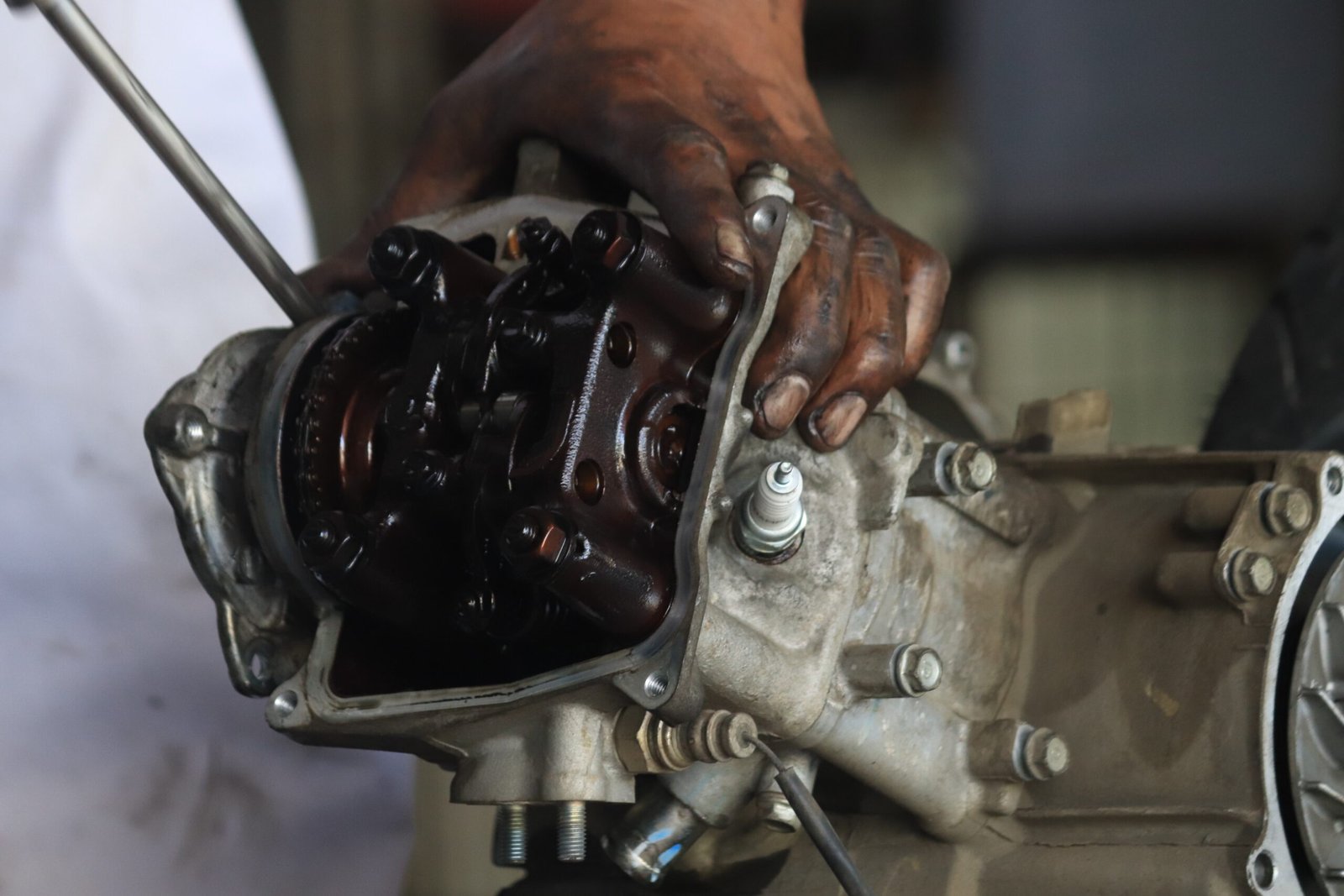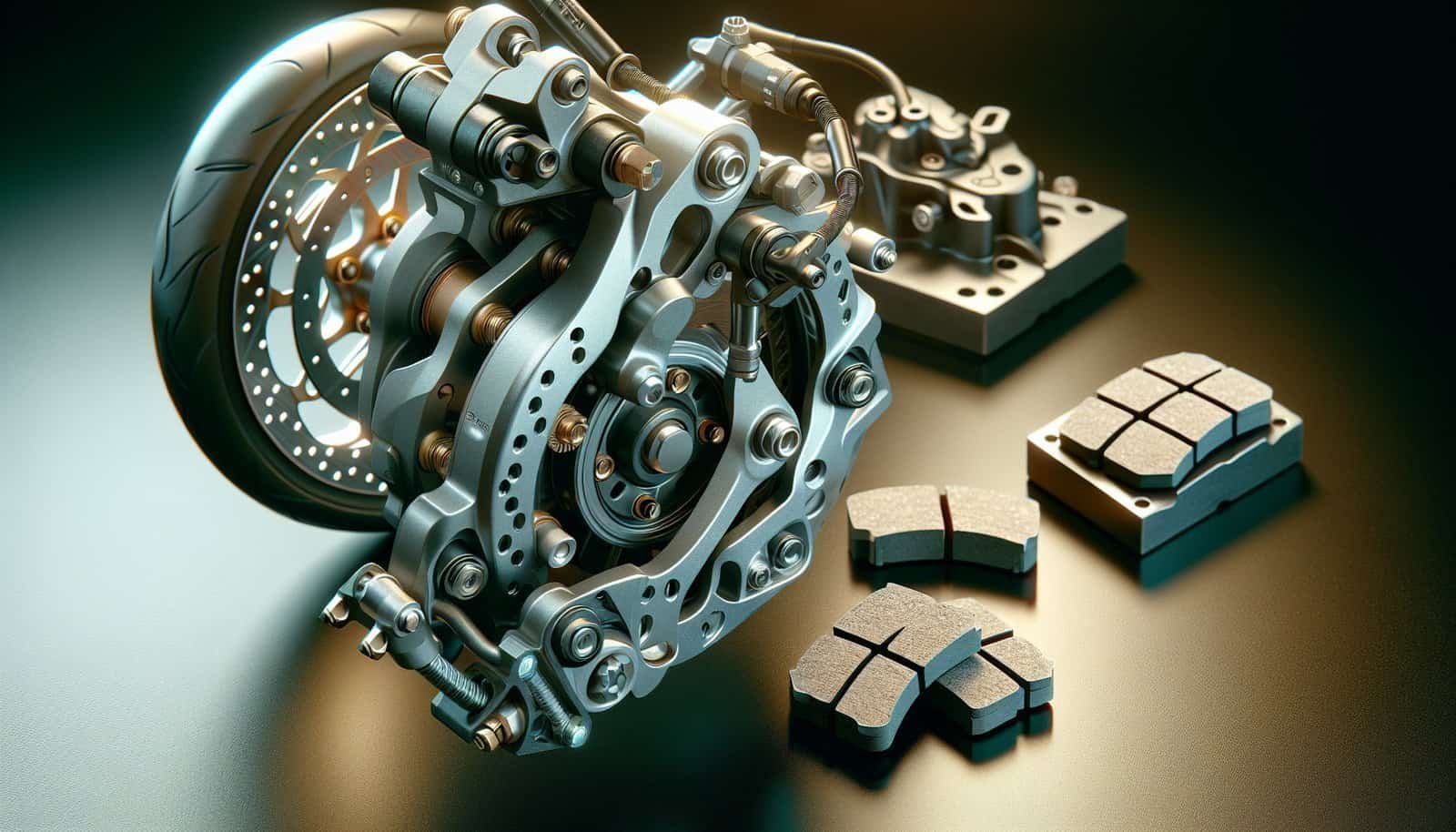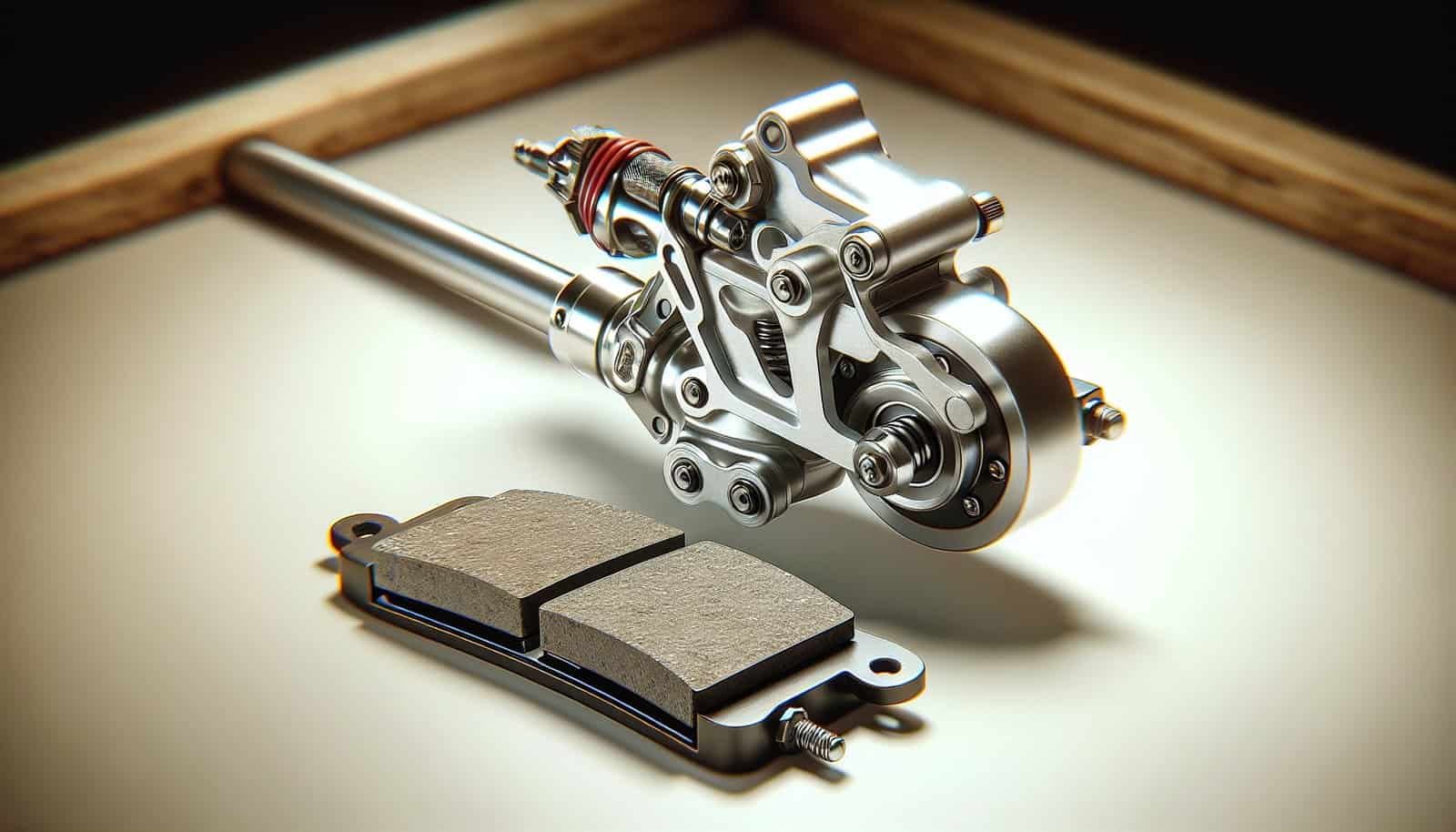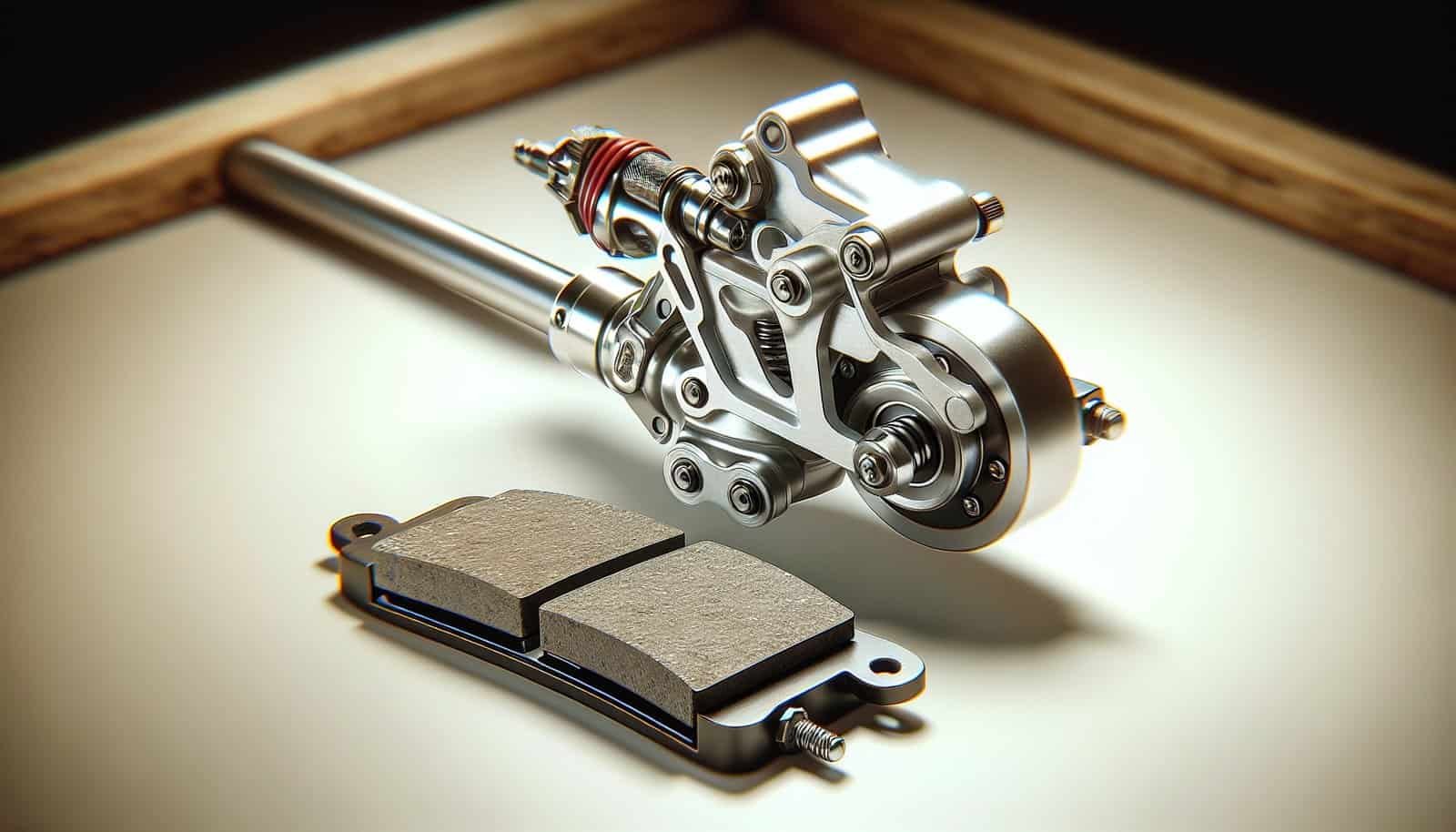Maintaining the braking system of your electric scooter is essential for both your safety and the overall longevity of your ride. From regular inspections to simple cleaning tasks, caring for your scooter’s brakes doesn’t have to be a daunting task. In this article, we will explore the different types of maintenance required for the braking system of your electric scooter, providing you with tips and insights on how to keep your ride smooth and your braking system in optimal condition. So, let’s dive right in and discover the key steps to ensuring a secure and enjoyable riding experience!

Regular Check-Up
Inspecting Brake Pads
Regularly inspecting the brake pads on your electric scooter is crucial for maintaining safe and effective braking performance. Start by visually examining the brake pads for any signs of wear. Look for thinning or uneven wear patterns, as this may indicate that the brake pads need to be replaced. Additionally, check for any glazing or discolouration on the surface of the brake pads, as this can affect their frictional properties.
Checking Brake Fluid
Another important aspect of brake system maintenance is checking the brake fluid. Begin by locating the brake fluid reservoir, which is typically located near the handlebars or under the seat of your electric scooter. Check the fluid level and ensure that it falls within the recommended range indicated on the reservoir. If the fluid level is low, it may be necessary to add more brake fluid. Additionally, inspect the brake fluid for any signs of contamination or discoloration, as this may indicate the need for a fluid flush and replacement.
Examining Brake Lines
The brake lines are responsible for transmitting brake fluid from the reservoir to the brake calipers, allowing for proper braking force. Regularly inspecting the brake lines is essential to ensure their integrity and functionality. Begin by visually examining the lines for any signs of leaks or damage, such as cracks or corrosion. Pay close attention to the fittings and connections, as they should be secure and free from any signs of wear. If any issues are detected, it is recommended to have a professional technician inspect and repair the brake lines.
Brake Pad Replacement
Determining Brake Pad Wear
Brake pads are designed to wear down over time due to the friction generated during braking. It is essential to determine when the brake pads have worn beyond their safe limit in order to replace them promptly. One way to check brake pad wear is by looking at the wear indicator, which is typically a small metal tab that makes contact with the rotor when the brake pads are worn down. If the wear indicator is making contact with the rotor or the pads appear significantly thinner, it is time to replace the brake pads.
Removing the Old Brake Pads
To replace the brake pads on your electric scooter, start by loosening the bolts that secure the brake caliper in place. Carefully remove the brake caliper from the rotor, taking care not to damage the brake line. Once the caliper is removed, the brake pads can be easily accessed. Remove the retaining pins or clips that secure the brake pads and slide them out of the caliper.
Installing New Brake Pads
When installing new brake pads, it is essential to ensure proper alignment and secure installation. Begin by applying a thin layer of brake grease to the back of each pad to improve braking performance and reduce noise. Slide the new brake pads into the caliper, making sure they are seated correctly. Reinstall the retaining pins or clips to securely hold the brake pads in place. Finally, carefully reattach the brake caliper to the rotor, ensuring that it is aligned properly. Tighten the bolts securely, but be cautious not to overtighten.
Brake Fluid Inspection and Replacement
Checking Brake Fluid Level
Regularly checking the brake fluid level is essential for maintaining optimal braking performance on your electric scooter. Locate the brake fluid reservoir, typically located near the handlebars or under the seat. Check the fluid level and ensure that it falls within the recommended range indicated on the reservoir. If the fluid level is low, carefully add the appropriate type of brake fluid recommended by the manufacturer. Be cautious not to overfill the reservoir, as this can lead to brake system malfunction.
Inspecting Brake Fluid Quality
In addition to checking the brake fluid level, it is important to inspect the quality of the fluid in your electric scooter’s braking system. Brake fluid can become contaminated over time, which can significantly impact its performance. Inspect the brake fluid for any signs of discoloration, cloudiness, or visible particles. If the fluid appears contaminated, it is recommended to flush and replace the brake fluid to maintain proper braking performance.
Flushing and Replacing Brake Fluid
Flushing and replacing the brake fluid in your electric scooter’s braking system is essential for maintaining optimal performance. Begin by locating the brake bleeder valve, typically found on the brake caliper or wheel cylinder. Attach a clear plastic tube to the valve and place the other end in a container to collect the old brake fluid. Have a helper slowly pump the brake lever while you open the bleeder valve with a wrench. This will allow the old fluid to be pushed out through the tube. Continue this process until clean fluid is observed, then close the bleeder valve. Finally, refill the brake fluid reservoir with fresh, clean brake fluid, ensuring it is within the recommended range.
Brake Line Maintenance
Visual Inspection of Brake Lines
Regularly visually inspecting the brake lines on your electric scooter is crucial for identifying any potential issues that may compromise the braking system’s integrity. Look for any signs of leaks, such as fluid drips or wet spots along the lines. Carefully inspect the lines for any signs of damage, such as cracks, abrasions, or corrosion. If any issues are detected, it is important to have the brake lines inspected and repaired by a professional technician.
Checking for Leaks or Damage
Besides visual inspection, it is important to check for leaks or other forms of damage in the brake lines of your electric scooter. Squeeze the brake lever gently and hold it for a few seconds, paying attention to any changes in lever resistance or fluid leaks. If you notice a loss of pressure or fluid leakage, it is crucial to have your brake lines inspected and repaired immediately by a qualified technician.
Bleeding the Brake System
Bleeding the brake system is a critical maintenance task that ensures the removal of air bubbles from the brake lines, ensuring optimal braking performance. To bleed the system, start by referring to your electric scooter’s user manual for specific instructions and the recommended bleeding procedure. Typically, the process involves opening the brake bleeder valve and gently squeezing the brake lever to release any air bubbles. Repeat this process until no more air bubbles are observed. It is important to follow proper bleeding techniques to maintain the integrity of the brake system.

Brake Caliper Cleaning
Removing the Caliper
Cleaning the brake caliper is an important maintenance step to remove brake dust and debris that can accumulate over time. Start by removing the brake caliper from the rotor. Depending on the design of your electric scooter, this may involve removing bolts that secure the caliper to the fork or frame. Take care not to damage the brake line during this process.
Cleaning Brake Caliper
Once the caliper is removed, it can be thoroughly cleaned using a suitable brake cleaner or mild soap and water. Use a soft brush or cloth to remove brake dust, dirt, and other debris from the caliper and its components. Take care not to damage any seals or moving parts while cleaning. It is also important to clean the brake pads and rotor surfaces to ensure optimal braking performance.
Reinstalling the Caliper
After cleaning the brake caliper, carefully reinstall it onto the rotor, making sure it is properly aligned. Securely tighten the bolts or fasteners that hold the caliper in place, taking care not to overtighten. Ensure that the brake pads are properly seated in the caliper and that they move freely when the brake lever is applied. Test the brakes before riding to ensure proper functionality.
Brake Rotor Inspection
Visual Examination of Brake Rotors
Regularly inspecting the brake rotors on your electric scooter is essential for detecting any signs of wear, warping, or damage. Visually examine the brake rotor surfaces for any irregularities, such as deep grooves, scoring, or heat spots. Look for signs of warping, which may manifest as uneven brake pad wear or pulsation when braking. If any significant issues are observed, it may be necessary to have the rotors resurfaced or replaced.
Checking for Warping or Cracks
In addition to visually examining the brake rotors, it is important to check for warping or cracks, as these can compromise braking performance and safety. One way to check for warping is by placing a straightedge across the surface of the rotor and measuring any gaps between the straightedge and the rotor. If significant gaps are observed, it may indicate rotor warping, requiring resurfacing or replacement. Carefully inspect the rotor edges and surface for any cracks or fractures that may compromise its structural integrity.
Measuring Brake Rotor Thickness
Checking the thickness of the brake rotors is essential to ensure they are within the manufacturer’s specified limits. Use a micrometer or a brake rotor thickness gauge to measure the thickness of the rotors in various spots across their surface. Compare the measurements to the minimum thickness specified by the manufacturer. If the rotors are below the minimum thickness, they should be replaced to maintain the braking system’s integrity.

Adjusting Brake Lever Tension
Evaluating Brake Lever Tension
Proper brake lever tension is essential for comfortable and effective braking on your electric scooter. Evaluate the brake lever tension by placing your hand on the lever and applying gentle pressure. The lever should offer a firm and responsive feel without requiring excessive force to engage the brakes. If the lever feels too loose or too tight, it may be necessary to adjust the tension.
Loosening or Tightening the Brake Lever
To adjust the brake lever tension on your electric scooter, locate the adjusting mechanism near the lever or at the caliper. Depending on the specific design, you may need to loosen or tighten a bolt or adjust a screw to achieve the desired tension. Follow the manufacturer’s instructions or consult the user manual for proper adjustment techniques. Make small adjustments and test the brakes after each adjustment to ensure the desired tension is achieved.
Ensuring Proper Brake Lever Position
In addition to tension adjustment, ensuring the proper position of the brake lever is important for comfortable and efficient braking. Ensure that the brake lever is positioned in a way that allows you to apply full braking force without straining your hand or fingers. If necessary, adjust the lever position by loosening the mounting bolts and repositioning the lever to a more comfortable angle. Remember to securely tighten the bolts afterward to prevent any potential accidents caused by a loose lever.
Maintaining Brake Cables
Inspecting Brake Cables
Regularly inspecting the brake cables on your electric scooter is crucial for identifying any signs of wear, fraying, or damage. Start by visually examining the cables from the handlebar to the brake caliper, paying close attention to any areas where the cables may rub against other parts. Look for signs of fraying, kinks, or corrosion. If any issues are detected, it is recommended to have the brake cables inspected and replaced by a professional technician.
Lubricating Brake Cables
Keeping the brake cables properly lubricated is important for ensuring smooth and reliable braking performance. Apply a small amount of a suitable cable lubricant or light oil to the exposed sections of the brake cables. Avoid using excessive amounts of lubrication, as it can attract dirt and debris, leading to potential cable malfunctions. After lubricating the cables, work the brake lever back and forth several times to distribute the lubricant evenly.
Adjusting Brake Cable Tension
Proper brake cable tension is crucial for optimal braking performance on your electric scooter. If you notice that the brakes feel too loose or too tight, it may be necessary to adjust the cable tension. To do this, locate the cable adjuster near the brake caliper or brake lever. Turn the adjuster clockwise to tighten the cable or counterclockwise to loosen it. Make small adjustments and test the brakes after each adjustment to ensure the desired tension is achieved.

Battery and Electrical System Check
Monitoring Battery Health
The battery and electrical system of your electric scooter play a vital role in the functioning of the braking system. Regularly monitor the health of the battery to ensure optimal performance. Check the battery voltage using a multimeter or consult the battery indicator on your electric scooter’s control panel. If the battery voltage is consistently low or if you notice a significant decrease in battery life, it may be necessary to have the battery checked or replaced by a professional.
Verifying Electrical Connections
Faulty or loose electrical connections can affect various components of your electric scooter, including the braking system. Regularly verify the electrical connections related to the braking system, including those at the brake lever, brake light switch, and brake caliper. Ensure that the connections are clean, secure, and free from corrosion. If any issues are detected, it is important to have the electrical connections inspected and repaired by a qualified technician.
Testing Brake Lights
Proper brake light functionality is essential for alerting other motorists to your braking maneuvers, enhancing overall safety. Regularly test the brake lights on your electric scooter to ensure they are functioning correctly. Activate the brake lever or pedal and observe whether the brake lights illuminate promptly and brightly. If the brake lights fail to operate or do not function as expected, it is recommended to have them inspected and repaired by a professional technician.
Adhering to Manufacturer’s Guidelines
Following Scheduled Maintenance
To ensure the optimal performance and longevity of your electric scooter’s braking system, it is vital to adhere to the manufacturer’s recommended maintenance schedule. The manufacturer provides specific guidelines regarding regular maintenance tasks and their respective intervals. These may include brake inspections, fluid checks, cable adjustments, and more. By following the recommended schedule, you can identify potential issues early on and take proactive measures to maintain the braking system’s efficiency.
Referencing User Manual
To gain a comprehensive understanding of your electric scooter’s braking system maintenance requirements, it is essential to refer to the user manual provided by the manufacturer. The user manual provides specific instructions, diagrams, and safety precautions related to maintaining and servicing the braking system. It also serves as a valuable resource for troubleshooting common issues and addressing any concerns related to the braking system. Make sure to read and reference the user manual regularly to ensure proper maintenance.
Seeking Professional Assistance
While regular maintenance tasks can be performed by electric scooter owners, some tasks may require the expertise of a professional technician. If you encounter any complex issues or if you are unsure about performing certain maintenance procedures, it is best to seek professional assistance. Qualified technicians have the knowledge, experience, and specialized tools to diagnose and repair any braking system problems effectively. They can also ensure that all maintenance tasks are performed according to the manufacturer’s guidelines, promoting optimal performance and safety.


